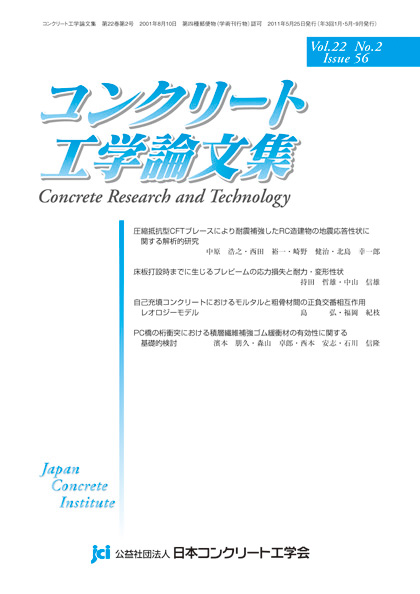Volume 6, Issue 1
Displaying 1-10 of 10 articles from this issue
- |<
- <
- 1
- >
- >|
-
1995Volume 6Issue 1 Pages 1-9
Published: January 17, 1995
Released on J-STAGE: November 13, 2012
Download PDF (1430K) -
Expansion and Cracking due to the Alkali-Silica Reaction in Concretes under the Natural Environments1995Volume 6Issue 1 Pages 11-19
Published: January 17, 1995
Released on J-STAGE: November 13, 2012
Download PDF (1608K) -
1995Volume 6Issue 1 Pages 21-29
Published: January 17, 1995
Released on J-STAGE: November 13, 2012
Download PDF (6157K) -
1995Volume 6Issue 1 Pages 31-42
Published: January 17, 1995
Released on J-STAGE: November 13, 2012
Download PDF (1457K) -
1995Volume 6Issue 1 Pages 43-53
Published: January 17, 1995
Released on J-STAGE: November 13, 2012
Download PDF (1621K) -
1995Volume 6Issue 1 Pages 55-63
Published: January 17, 1995
Released on J-STAGE: November 13, 2012
Download PDF (1262K) -
1995Volume 6Issue 1 Pages 65-72
Published: January 17, 1995
Released on J-STAGE: November 13, 2012
Download PDF (916K) -
1995Volume 6Issue 1 Pages 73-79
Published: January 17, 1995
Released on J-STAGE: November 13, 2012
Download PDF (2476K) -
1995Volume 6Issue 1 Pages 81-88
Published: January 17, 1995
Released on J-STAGE: November 13, 2012
Download PDF (919K) -
1995Volume 6Issue 1 Pages 89-101
Published: January 17, 1995
Released on J-STAGE: November 13, 2012
Download PDF (1653K)
- |<
- <
- 1
- >
- >|
